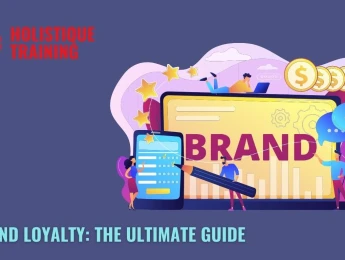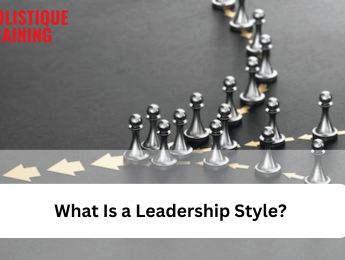Table of Contents
- Introduction
- What Is Brand Loyalty?
- The 3 Characteristics of Brand Loyalty
- 1. Perceived Brand Value
- 2. Perceived Brand Quality
- 3. Perceived Brand Trust
- The 3 Types of Brand Loyalty
- 1. Hard-core Brand Loyalty
- 2. Split-customer Brand Loyalty
- 3. Shifting-customer Brand Loyalty
- Why Is Brand Loyalty Important?
- Cost-Effective Customer Retention
- Enhanced Customer Lifetime Value
- Resistance to Competitive Pressures
- Amplified Brand Advocacy
- Buffer Against Market Volatility
- How to Build Brand Loyalty
- 1. Cultivate a Unique Brand Identity
- 2. Deliver Consistent Quality and Value
- 3. Foster Emotional Connections
- 4. Prioritise Customer Service
- 5. Engage in Community Building
- 6. Innovate and Stay Relevant
- Brand Loyalty & Customer Loyalty: What’s the Difference?
- 1. Brand Loyalty
- 2. Customer Loyalty
- Understanding the Relationship:
- Differentiating Factors:
- Strategic Implications
- What Is a Brand Ambassador?
- Companies with Great Brand Loyalty
- 1. Apple
- 2. Nike
- 3. Starbucks
- 4. Coca-Cola
- 5. Disney
- How to Reward Loyal Customers
- a) Tailored Rewards and Incentives
- b) Exclusive Access and VIP Treatment
- c) Gamification and Engagement Initiatives
- d) Meaningful Gestures and Surprise Delights
- d) Soliciting Feedback and Collaboration
- How Do You Measure Brand Loyalty?
- 1. Repeat Purchase Rate
- 2. Customer Retention Rate
- 3. Net Promoter Score (NPS)
- 4. Customer Lifetime Value (CLV)
- 5. Customer Feedback and Sentiment Analysis
- Conclusion
Introduction
Unlocking the heart of successful business endeavours often involves unravelling the enigmatic concept of brand loyalty. It's more than a transactional relationship; it's a steadfast commitment that consumers willingly cultivate with their preferred brands. In this exploration, we will delve into the intricacies of brand loyalty, dissecting its characteristics, types, significance, and unveiling the strategies to foster it.
What Is Brand Loyalty?
Brand loyalty transcends mere product preference. It's a deep-rooted commitment, a conscious decision by consumers to choose a particular brand over its competitors consistently. Brand loyalty is a relationship built on trust, satisfaction, and an emotional connection between the consumer and the brand.
The 3 Characteristics of Brand Loyalty
In the intricate tapestry of brand loyalty, three defining characteristics emerge as the pillars upon which enduring consumer relationships are built. These characteristics—perceived Brand Value, Perceived Brand Quality, and Perceived Brand Trust—create a symphony of perceptions that resonate deeply with consumers, fostering a connection that goes beyond the transactional nature of commerce.
1. Perceived Brand Value
The journey to brand loyalty often commences with the consumer's assessment of the value a brand offers. This transcends the monetary aspect and encompasses the holistic experience the brand provides. Consumers seek a brand that aligns with their needs, values, and aspirations, and one that consistently goes the extra mile to enhance their overall satisfaction.
Perceived brand value is not merely about pricing strategies; it's about delivering a comprehensive experience that justifies the cost. This experience includes factors like the product's functionality, the uniqueness of the brand's offerings, and the alignment of the brand's values with those of the consumer. When consumers perceive that they receive significant value for their investment, they are more likely to develop a sense of attachment and commitment to the brand.
Consider Apple, a prime example of a brand that has mastered the art of delivering perceived value. Beyond its sleek and innovative products, Apple has created an ecosystem that seamlessly integrates into its users' lifestyles. The perceived value goes beyond the tangible product; it extends to the entire Apple experience, from the seamless integration of devices to the robust customer support system.
2. Perceived Brand Quality
Quality is the silent architect of brand loyalty. The underlying factor transforms a one-time purchase into a long-term commitment. When consumers consistently experience high-quality products or services, trust in the brand's ability to deliver becomes ingrained. Perceived brand quality becomes a hallmark, distinguishing the brand in a crowded marketplace and setting the stage for enduring loyalty.
For consumers, a brand's perceived quality is not only about the durability of a physical product; it encompasses overall craftsmanship, attention to detail, and the brand's commitment to continuous improvement. Brands that invest in maintaining and elevating the quality of their offerings create a narrative of reliability and excellence that resonates with their audience.
Take Mercedes-Benz, for instance. The brand is synonymous with luxury, and this association is not solely rooted in aesthetics. The unwavering commitment to engineering precision, the use of premium materials, and the relentless pursuit of innovation elevate the brand's perceived quality. Consumers who choose Mercedes-Benz are not just purchasing a vehicle but investing in a quality legacy.
3. Perceived Brand Trust
Trust is the glue that binds brand and consumer in a relationship built on mutual respect. Perceived brand trust is not a static element; it's a dynamic attribute that evolves with each interaction and experience. Consumers trust a brand when they believe in its integrity, honesty, and commitment to fulfilling promises.
Building and maintaining brand trust requires consistent efforts across all customer journey touchpoints. Transparent communication, ethical business practices, and a genuine concern for customer welfare are the cornerstones of trust. Brands prioritising these elements create a foundation that can weather challenges and solidify the bond with their audience.
Consider the trust Amazon has cultivated. Beyond its vast product selection and efficient delivery, Amazon's commitment to customer satisfaction and transparent approach to handling issues have fostered a deep trust. Consumers feel confident in purchasing, knowing that the brand prioritises their needs and stands behind its commitments.
In essence, the three characteristics of brand loyalty work in harmony, weaving a narrative that resonates with consumers on both rational and emotional levels. Perceived brand value sets the stage, perceived brand quality builds the foundation, and perceived brand trust seals the connection. Together, they create a symphony that echoes in the hearts of consumers, transforming them from one-time buyers into loyal advocates.
The 3 Types of Brand Loyalty
Brand loyalty is a dynamic spectrum, and within its folds, three distinct types emerge, each painting a nuanced picture of consumer commitment. From the steadfast allegiance of hard-core brand loyalty to the nuanced preferences of split-customer loyalty and the shifting dynamics of the ever-adapting shifting-customer loyalty, understanding these variations is essential for brands seeking to navigate the complex landscape of consumer allegiance.
1. Hard-core Brand Loyalty
At the pinnacle of brand loyalty lies the realm of hard-core enthusiasts. These consumers don't merely choose a brand; they ardently embrace it as an integral part of their identity. The relationship transcends the transactional nature of commerce and becomes a deeply ingrained aspect of their lifestyle.
Hard-core brand loyalists are the ambassadors, the vocal advocates who consistently choose a particular brand and actively promote it within their social circles. External influences or fleeting trends do not easily sway their loyalty. It is rooted in a profound emotional connection, often cultivated over years of positive experiences with the brand.
Think of Apple's devoted fan base, colloquially known as "Apple aficionados." These individuals not only purchase Apple products; they eagerly anticipate new releases, engage in online communities, and proudly showcase their allegiance. The brand becomes a symbol of identity, and the loyalty extends beyond the product to the entire Apple ecosystem.
2. Split-customer Brand Loyalty
In a market saturated with choices, split-customer loyalty emerges as a common phenomenon. Consumers in this category exhibit loyalty to different brands within the same product category, depending on specific factors such as price, convenience, or varying needs. This type of loyalty is more pragmatic, driven by situational considerations rather than unwavering allegiance.
Split-customer loyalty acknowledges that consumers may have diverse needs and preferences that different brands fulfil. For example, a customer might be loyal to a high-end brand for certain premium products but opt for a more affordable option for everyday items. Brands that understand and cater to the diverse needs of split-customer loyalty can capture a broader market share.
Consider a consumer who prefers a specific athletic brand for running shoes but opts for a different brand for casual sneakers. The loyalty is present, but it's distributed based on each product category's specific attributes and requirements.
3. Shifting-customer Brand Loyalty
The landscape of consumer preferences is ever-evolving, and shifting customer loyalty reflects this dynamic nature. Consumers in this category are more fluid in their brand loyalties, frequently switching between brands based on various factors such as promotions, trends, or external influences. While less steadfast than hard-core loyalty, shifting customer loyalty is a reality in the fast-paced and competitive market.
Brands aiming to capture the attention of shifting customers must prioritise adaptability and agility. This involves staying attuned to market trends, understanding the factors influencing consumer choices, and consistently innovating to meet evolving preferences.
Think of a consumer who, influenced by a limited-time promotion or a social media trend, decides to try a new skincare brand. Shifting customer loyalty is not rooted in a deep emotional connection but is influenced by external factors that brands can leverage to capture attention and encourage trial.
Understanding these three types of brand loyalty is crucial for brands seeking to cultivate and maintain consumer allegiance. While hard-core loyalty represents the pinnacle of devotion, split-customer and shifting-customer loyalties acknowledge consumer preferences' diverse and dynamic nature. Successful brands navigate this spectrum with finesse, leveraging each type of loyalty to create a comprehensive strategy that resonates with a broad audience.
Why Is Brand Loyalty Important?
Brand loyalty is not merely a feel-good metric or a vanity badge; it is a strategic cornerstone that propels businesses towards sustainable success. Beyond the surface level of repeat purchases and customer retention, brand loyalty weaves a tapestry of interconnected benefits that fortify a brand's position in the market.
Cost-Effective Customer Retention
Customer acquisition is undeniably costly. On the other hand, building brand loyalty fosters a loyal customer base that requires less investment to maintain. Loyal customers are more likely to stick with a brand through fluctuations in pricing or external market influences, reducing the need for constant marketing efforts to attract new customers.
Moreover, loyal customers often serve as brand advocates, bringing in new business through positive word-of-mouth. This organic growth becomes a cost-effective channel for acquiring new customers, as recommendations from trusted sources hold more sway than traditional marketing messages. It’s no wonder that most revenue in many companies stems from repeat business, with existing clients accounting for approximately 65% of total sales, according to Investopedia.
Enhanced Customer Lifetime Value
Brand loyalty extends the customer lifespan with a brand, contributing to an increased Customer Lifetime Value (CLV). Loyal customers are not just one-time buyers but potential repeat purchasers over an extended period. This prolonged relationship translates into higher revenue potential, making each customer more valuable over time.
Furthermore, loyal customers are likely to explore additional products or services the brand offers, contributing to an expanded wallet share. This diversification of purchases adds another layer to the customer's overall value, reinforcing the importance of brand loyalty in driving sustainable revenue growth.
Resistance to Competitive Pressures
In a competitive market, where choices abound and consumers can easily switch allegiances, brand loyalty protects against competitive pressures. Loyal customers are less susceptible to the lure of promotions or discounts competitors offer. The emotional connection and trust built through brand loyalty create a barrier that competitors find challenging to breach.
A brand with a loyal customer base can more effectively weather economic downturns, industry shifts, or new entrants. Its resistance to competitive pressures positions the brand as a consistent and reliable choice, even when faced with enticing alternatives.
Amplified Brand Advocacy
Loyal customers are not just repeat purchasers; they evolve into brand advocates. Their enthusiasm and positive experiences turn them into vocal promoters who willingly share their satisfaction with the brand. This organic form of marketing is immensely powerful, as recommendations from existing customers carry inherent credibility.
Amplified brand advocacy extends the brand's reach into new networks and communities. Positive word-of-mouth, fueled by brand loyalty, becomes a catalyst for attracting new customers who are more likely to trust the endorsement of someone with first-hand experience.
Buffer Against Market Volatility
Markets are inherently volatile and subject to fluctuations in consumer behaviour, economic conditions, and unforeseen events. Brand loyalty serves as a stabilising force amid this volatility. Loyal customers are more likely to maintain their purchasing habits even during challenging times, providing a steady stream of revenue when external factors might impact overall market demand.
This resilience positions brands with a loyal customer base to navigate market uncertainties more effectively. While competitors may experience fluctuations in their customer base, brands with strong loyalty can maintain a more stable footing, mitigating the impact of external disruptions.
In essence, brand loyalty is not just a metric to monitor; it is a strategic imperative influencing the fundamental dynamics of business success. From cost-effective customer retention to fortified resistance against competitive pressures, the importance of brand loyalty reverberates across the entire spectrum of business operations, shaping a brand's trajectory towards sustained growth and resilience.
How to Build Brand Loyalty
Building brand loyalty is a delicate art that requires a strategic blend of authenticity, consistency, and a genuine commitment to customer satisfaction. Here, we delve into actionable strategies brands can employ to foster a deep and lasting connection with their audience.
1. Cultivate a Unique Brand Identity
At the heart of brand loyalty lies a distinctive identity that resonates with the target audience. Brands must go beyond product features and prices, focusing on crafting a unique persona that sets them apart in a crowded market. This identity should reflect the brand's values, mission, and personality, creating a cohesive narrative that consumers can connect emotionally.
A unique brand identity is a beacon, attracting like-minded consumers who align with the brand's ethos. It lays the foundation for a lasting relationship built on shared values and aspirations, contributing to the development of brand loyalty.
2. Deliver Consistent Quality and Value
Consistency is the bedrock of brand loyalty. Brands must consistently deliver high-quality products or services that meet or exceed customer expectations. This commitment to excellence creates a sense of reliability and trust, essential to a lasting relationship.
Additionally, offering consistent value through promotions, loyalty programs, or exclusive perks further solidifies the brand-consumer connection. In fact, statistics show that more than 83% of consumers acknowledge that membership in a loyalty program significantly influences their choice to make repeat purchases from a brand. Whether it's providing valuable content, personalised experiences, or special discounts, brands that consistently deliver tangible value foster a sense of reciprocity that contributes to brand loyalty.
3. Foster Emotional Connections
Emotional connections are the glue that binds consumers to a brand. Brands that tap into the emotional aspects of their consumers' lives create a more profound and memorable impact. This can be achieved through storytelling, relatable marketing campaigns, or initiatives that evoke positive emotions.
Fostering emotional connections requires a deep understanding of the target audience and the ability to align the brand's messaging with their values and experiences. When consumers feel emotionally connected to a brand, the relationship transcends the transactional nature, cultivating a sense of loyalty that extends beyond product features.
4. Prioritise Customer Service
Exceptional customer service is a powerful tool in building brand loyalty. It's not just about resolving issues; it's about creating positive and memorable interactions at every touchpoint. Brands prioritising customer satisfaction respond promptly to concerns and go the extra mile to exceed expectations, leaving a lasting positive impression.
Effective customer service builds trust and reinforces the brand's commitment to its customers' well-being. A satisfied customer is likelier to become a loyal advocate, contributing to positive word-of-mouth and enhancing the brand's reputation.
5. Engage in Community Building
Creating a community around the brand fosters a sense of belonging among consumers. Whether through social media groups, forums, or offline events, brands can provide platforms for like-minded individuals to connect and share their experiences.
Community building enhances brand loyalty by creating a shared space where consumers feel heard and valued. It also provides an avenue for brands to gather feedback, understand consumer preferences, and tailor their offerings to meet the needs of their audience better.
6. Innovate and Stay Relevant
Innovation is key to maintaining brand relevance in a dynamic market. Brands must stay attuned to changing consumer preferences, industry trends, and technological advancements. Regularly updating products, introducing new features, or adopting sustainable practices demonstrates a commitment to staying ahead of the curve.
Innovation attracts new customers and keeps existing ones excited and engaged. Brands that consistently innovate signal to their audience that they are invested in providing the best possible experience, reinforcing brand loyalty.
Building brand loyalty is a multifaceted endeavour that requires a holistic approach. By cultivating a unique brand identity, consistently delivering quality and value, fostering emotional connections, prioritising customer service, engaging in community building, and staying innovative, brands can lay the groundwork for enduring connections with their audience. This strategic investment in loyalty contributes to short-term success and forms the foundation for sustained growth and resilience in the competitive landscape.
Brand Loyalty & Customer Loyalty: What’s the Difference?
While the terms "brand loyalty" and "customer loyalty" are often used interchangeably, they represent distinct facets of consumer allegiance. Understanding the nuances between these two concepts is crucial for brands aiming to cultivate meaningful and lasting relationships with their audience.
1. Brand Loyalty
Brand loyalty transcends individual products or services, encompassing consumers' overall perception and connection with a brand. It is a holistic allegiance to the brand as a whole, driven by factors such as brand identity, values, and the emotional resonance that the brand evokes.
Consumers exhibiting brand loyalty are not merely repeat purchasers; they identify with the brand on a deeper level. This identification often extends beyond specific transactions and products, influencing their lifestyle choices and preferences. Brand loyalty is a testament to its ability to create a distinctive image and foster a meaningful connection with its audience.
2. Customer Loyalty
On the other hand, customer loyalty is more transactional in nature. It focuses on the specific interactions and experiences a customer has with a brand at the individual level. It revolves around the satisfaction derived from product or service usage, customer service interactions, and the overall customer journey.
Customer loyalty can be fostered through positive experiences, consistent quality, and excellent customer service. While it contributes to repeat business and can lead to advocacy on the part of the customer, it is more directly tied to the tangible elements of the customer experience.
Understanding the Relationship:
Brand loyalty and customer loyalty are interconnected, with one influencing the other. Customers may initially be drawn to a brand due to its marketing, values, or overall image (brand loyalty). However, the ongoing customer experience, including product performance, service interactions, and overall satisfaction, contributes to the development of customer loyalty.
Conversely, strong customer loyalty can feed into brand loyalty. Satisfied customers may become advocates for the brand, spreading positive word-of-mouth and contributing to its overall positive image and reputation. In this way, the two concepts merge to create a symbiotic relationship where the brand's overall perception influences individual transactions and vice versa.
Differentiating Factors:
Scope of Attachment
Brand loyalty extends beyond specific transactions and products, encompassing the brand's identity and values. While contributing to repeat business, customer loyalty focuses more on the individual's satisfaction with specific interactions.
Influence on Lifestyle
Brand loyalty can shape a consumer's lifestyle choices, as the brand becomes a part of their identity. Customer loyalty, while significant, may not necessarily influence broader lifestyle decisions.
Emotional Connection
Brand loyalty is often driven by emotional connections with the brand's story, values, and overall image. Customer loyalty is more directly tied to the emotional satisfaction of individual product or service experiences.
Strategic Implications
Understanding the distinctions between brand loyalty and customer loyalty has strategic implications for businesses. Brands must balance building a strong overall brand image with delivering exceptional customer experiences. A brand with a compelling identity may attract customers, but maintaining their loyalty requires consistent excellence in every customer touchpoint.
In summary, brand loyalty and customer loyalty, though interconnected, represent different dimensions of consumer allegiance. While brand loyalty speaks to consumers' overall affinity and connection with a brand, customer loyalty is tied more directly to the specific experiences and transactions between a customer and the brand. A strategic approach that addresses both facets ensures a comprehensive approach to building lasting relationships with the audience.
What Is a Brand Ambassador?
A brand ambassador is not just a face on an advertisement; they are the living embodiment of brand loyalty. These individuals, often customers themselves, passionately promote and represent a brand. Their influence extends to their social circles, making them invaluable in expanding a brand's reach.
Companies with Great Brand Loyalty
In the dynamic landscape of commerce, certain companies stand out for their exceptional ability to cultivate and maintain unwavering brand loyalty. These trailblazers have mastered the art of creating meaningful connections with their audience, setting a benchmark for brand loyalty across industries. Let's explore some notable examples:
1. Apple
Apple's brand loyalty is legendary, and it has a dedicated fan base that spans the globe. The tech giant has crafted a distinctive brand identity characterised by innovation, sleek design, and a seamless user experience. Apple's products have transcended mere functionality to become iconic symbols of status and lifestyle. According to Sellcell’s statistics, Apple's brand loyalty soared to a remarkable 92%, marking an all-time high in 2021.
Central to Apple's success is its unwavering commitment to quality and innovation. From the groundbreaking iPhone to the intuitive MacBook, each product release is met with fervent anticipation and unparalleled consumer enthusiasm. Apple's ecosystem approach further cements brand loyalty, creating a seamless integration between devices and services that enhances the user experience.
2. Nike
Nike's swoosh logo is synonymous with excellence, athleticism, and empowerment. The sportswear giant has built a global empire on the pillars of innovation, performance, and inspiration. Nike's brand loyalty extends far beyond its products; it represents a lifestyle, a mindset, and a commitment to pushing boundaries.
At the heart of Nike's brand loyalty is its ability to resonate with consumers on an emotional level. Through powerful marketing campaigns, endorsements from top athletes, and a relentless pursuit of excellence, Nike inspires individuals to strive for greatness both on and off the field. Nike's iconic slogan, "Just Do It," encapsulates the brand's ethos and serves as a rallying cry for millions worldwide.
3. Starbucks
Starbucks has redefined the coffee experience, transforming a simple beverage into a cultural phenomenon. The coffee chain has cultivated a loyal following by offering more than just caffeine; it provides a sense of community, comfort, and familiarity. Starbucks' brand loyalty is rooted in its ability to create a welcoming environment where customers feel valued and understood.
Starbucks' success lies in its focus on customer experience and customisation. From personalised drink orders to cosy ambience, Starbucks strives to make every visit memorable. Its innovative loyalty program, Starbucks Rewards, further enhances brand loyalty by rewarding customers for their patronage and fostering a sense of exclusivity and belonging.
4. Coca-Cola
Coca-Cola's iconic red label is synonymous with refreshment, happiness, and nostalgia. For over a century, the beverage giant has captured consumers' hearts and taste buds worldwide. Coca-Cola's brand loyalty is rooted in its timeless appeal, universal accessibility, and emotional resonance.
Central to Coca-Cola's brand loyalty is its ability to evoke feelings of joy, togetherness, and celebration. Through iconic advertising campaigns, memorable slogans, and ubiquitous presence, Coca-Cola has woven itself into the fabric of popular culture. Whether it's sharing a Coke with friends or enjoying a refreshing beverage on a hot summer day, Coca-Cola has become more than just a drink; it's a symbol of shared moments and simple pleasures.
5. Disney
Disney's brand loyalty transcends generations, enchanting audiences young and old with its magical storytelling and timeless characters. The entertainment giant has built an empire based on imagination, creativity, and enchantment. Disney's brand loyalty is rooted in its ability to create immersive experiences that transport audiences to fantastical worlds.
Disney's commitment to storytelling and innovation is at the heart of its brand loyalty. From beloved animated classics to groundbreaking theme park attractions, Disney captivates audiences with its ability to evoke wonder and inspire imagination. Through its diverse portfolio of brands and franchises, Disney continues to capture the hearts and imaginations of millions worldwide.
In short, these companies exemplify the power of brand loyalty in shaping consumer behaviour, driving business success, and transcending industry boundaries. Through a combination of innovation, authenticity, and emotional resonance, they have forged enduring connections with their audience, setting a standard for excellence in brand loyalty. As businesses navigate the ever-evolving landscape of consumer preferences and market dynamics, the lessons learned from these trailblazers serve as a guiding light in pursuing lasting consumer devotion.
How to Reward Loyal Customers
In the dynamic business ecosystem, nurturing and retaining loyal customers is paramount to sustained success. One of the most effective ways to cultivate and reinforce brand loyalty is through strategically implementing customer rewards programs. These programs acknowledge the value of customer loyalty, foster deeper connections, and encourage continued engagement. Let's explore some effective strategies for rewarding loyal customers:
a) Tailored Rewards and Incentives
One size does not fit all when it comes to customer rewards. Tailoring rewards and incentives based on individual preferences, purchase history, and engagement levels enhances their perceived value and relevance. Personalised rewards demonstrate that the brand values and understands each customer's unique needs, fostering a sense of appreciation and exclusivity.
Brands can leverage data analytics and customer insights to identify patterns and preferences, allowing them to design rewards programs that resonate with their audience. Whether it's offering exclusive discounts, personalised recommendations, or special perks, tailored rewards create a sense of reciprocity and deepen the bond between the brand and its customers.
b) Exclusive Access and VIP Treatment
Creating a sense of exclusivity and VIP treatment for loyal customers elevates their experience and reinforces their sense of belonging. Offering early access to new products, limited-edition merchandise, or exclusive events cultivates a feeling of privilege and appreciation.
VIP treatment can extend beyond traditional rewards, including personalised services, dedicated customer support, and priority access to resources. By making loyal customers feel valued and recognised, brands strengthen their emotional connection and increase their likelihood of continued loyalty and advocacy.
c) Gamification and Engagement Initiatives
Integrating gamification into rewards programs adds fun and excitement while encouraging ongoing engagement. Challenges, milestones, and interactive experiences incentivise customers to participate actively and strive towards attainable goals.
From loyalty points and badges to progress trackers and leaderboard rankings, gamified rewards programs tap into customers' innate desire for achievement and recognition. By transforming loyalty into a playful and rewarding experience, brands create a positive feedback loop that motivates customers to remain loyal and engaged over the long term.
d) Meaningful Gestures and Surprise Delights
Surprise and delight initiatives are powerful tools for creating memorable moments and fostering emotional customer connections. Unexpected gestures such as handwritten notes, personalised gifts, or exclusive experiences demonstrate genuine appreciation and leave a lasting impression.
These meaningful gestures go beyond transactional rewards, creating emotional resonance and strengthening the bond between the brand and its customers. By exceeding expectations and demonstrating authentic care and gratitude, brands cultivate loyalty that transcends mere transactions and becomes a deeply ingrained part of the customer experience.
d) Soliciting Feedback and Collaboration
Inviting loyal customers to participate in feedback sessions, surveys, or co-creation initiatives empowers them to contribute to the evolution of the brand and its offerings. Actively soliciting feedback demonstrates that the brand values its input and is committed to continuous improvement and innovation.
Moreover, involving customers in decision-making fosters a sense of ownership and investment in the brand's success. By collaborating with loyal customers to shape future initiatives and products, brands strengthen loyalty and foster a sense of community and partnership.
In summary, rewarding loyal customers is not merely a transactional exchange; it's an opportunity to nurture and deepen relationships through meaningful gestures, personalised experiences, and genuine appreciation. By implementing tailored rewards programs acknowledging and celebrating customer loyalty, brands can cultivate lasting connections, drive advocacy, and position themselves for sustained success in an increasingly competitive marketplace.
How Do You Measure Brand Loyalty?
While brand loyalty may seem intangible, several key metrics and indicators provide valuable insights into the strength and depth of consumer allegiance. Let's explore some effective methods for measuring brand loyalty:
1. Repeat Purchase Rate
One of the fundamental indicators of brand loyalty is the repeat purchase rate, which measures the percentage of customers who return to make subsequent purchases from the same brand. A high repeat purchase rate signifies that customers are satisfied with the brand's products or services and are willing to continue engaging with the brand over time.
Monitoring trends in the repeat purchase rate allows brands to gauge the effectiveness of their marketing efforts, product quality, and customer service initiatives. By analysing changes in the repeat purchase rate over time, brands can identify areas for improvement and refine their strategies to enhance customer retention and loyalty.
2. Customer Retention Rate
The customer retention rate measures the percentage of customers patronising a brand over a specified period. This metric provides valuable insights into the brand's ability to retain customers and build long-term relationships with its audience.
A high customer retention rate indicates that the brand has successfully cultivated loyalty among its customer base, fostering trust, satisfaction, and a positive brand perception. Brands can track changes in the customer retention rate over time to assess the effectiveness of retention strategies and identify opportunities for optimisation.
Metric | Description | Importance |
Repeat Purchase Rate | Percentage of customers making repeat purchases | Indicates customer satisfaction and loyalty |
Customer Retention Rate | Percentage of customers retained over a period | Reflects brand loyalty and satisfaction |
Net Promoter Score (NPS) | Measure of customer loyalty and satisfaction | Indicates likelihood of customer advocacy |
Customer Lifetime Value (CLV) | Total value contributed by a customer over time | Reflects long-term customer loyalty |
Customer Feedback Analysis | Qualitative insights into customer satisfaction and sentiment | Provides understanding of emotional connection |
Table 1: Metrics to Measure Brand Loyalty
3. Net Promoter Score (NPS)
The Net Promoter Score (NPS) is a widely used metric for measuring customer loyalty and satisfaction. NPS is based on a simple question: "How likely are you to recommend our brand to a friend or colleague?" Customers are asked to rate their likelihood on a scale of 0 to 10, with respondents categorised into promoters (score 9-10), passives (score 7-8), and detractors (score 0-6).
Brands obtain their Net Promoter Score by calculating the difference between the percentage of promoters and detractors. A high NPS indicates that a brand has a strong base of loyal customers who are likely to recommend it to others, while a low NPS suggests areas for improvement and potential challenges in building loyalty.
4. Customer Lifetime Value (CLV)
Customer Lifetime Value (CLV) measures the total value a customer contributes to a brand throughout their relationship. CLV considers factors such as repeat purchases, average order value, and customer retention rate to estimate the long-term revenue potential of individual customers.
By analysing CLV, brands can identify their most valuable customers and prioritise initiatives to enhance customer satisfaction, loyalty, and lifetime value. Understanding the factors that drive CLV allows brands to allocate resources effectively and focus on strategies that maximise the return on investment.
5. Customer Feedback and Sentiment Analysis
Customer feedback and sentiment analysis provide qualitative insights into customers' emotional connection and satisfaction levels with the brand. By collecting feedback through surveys, reviews, and social media channels, brands can better understand customer perceptions, preferences, and pain points.
Sentiment analysis tools analyse the language and tone used in customer feedback to identify patterns and trends in sentiment towards the brand. Positive sentiment indicates strong brand loyalty and satisfaction, while negative sentiment may signal areas for improvement and potential risks to brand reputation.
In short, measuring brand loyalty is a multifaceted endeavour that requires a combination of quantitative metrics and qualitative insights. By tracking key indicators such as repeat purchase rate, customer retention rate, Net Promoter Score, Customer Lifetime Value, and customer feedback, brands can assess the strength of their customer relationships and make data-driven decisions to enhance loyalty, satisfaction, and long-term success.
Conclusion
In conclusion, brand loyalty is the lifeblood of enduring business success. It's a symbiotic relationship where brands provide value, quality, and trust, and consumers reciprocate with unwavering loyalty. Nurturing this relationship requires a strategic blend of consistency, emotional connection, and customer-centric initiatives. As we navigate the intricate landscape of modern commerce, understanding and cultivating brand loyalty emerges as a fundamental imperative for sustainable growth.
In your journey to master the intricacies of brand loyalty, consider enrolling in our exclusive course, ‘Developing Brand Loyalty through Customer Service.’ Gain invaluable insights into crafting customer-centric strategies, fostering emotional connections, and implementing service initiatives that resonate with your audience. Elevate your brand to new heights by learning the art of creating exceptional customer experiences. Join us on this transformative learning adventure and position your brand for sustained success in the competitive market. Enrol now and unlock the keys to building lasting connections with your customers.
























